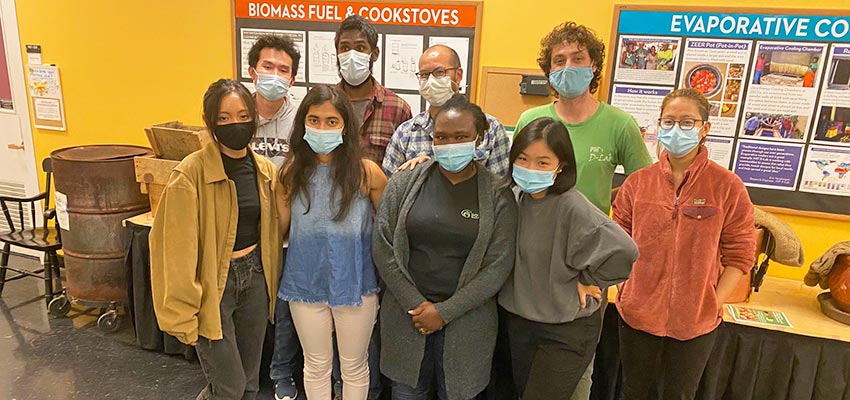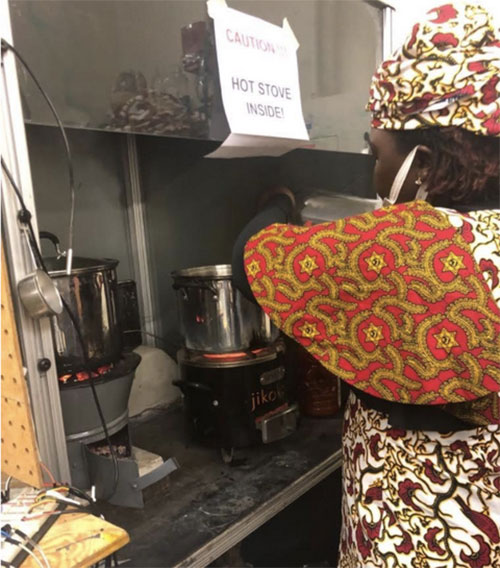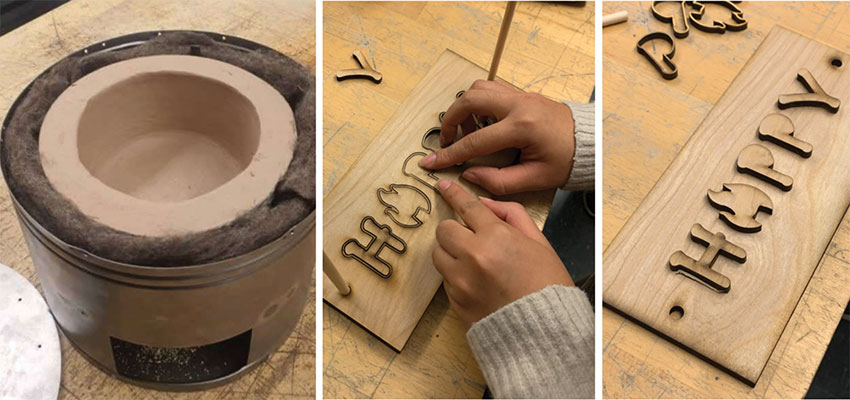
Project description
Function
Our main goal of the project is to improve cookstove performance regarding efficiency and emissions. Efficiency can be characterized as, of the energy in the briquettes or other fuel source, how much actually goes into the pot of food vs lost into the surroundings? Emissions analyzes health and climate-harming emissions, such as carbon monoxide, carbon dioxide, and particulate matter. Ultimately, the design should be efficient, meet international standards of cookstoves, and easily replicable in Nigeria.

Form
One of the main cookstove competitors in Nigeria is the Jikokoa, known for its sleek and modern design despite being nearly 3x the cost. An opportunity area for Happy Stoves is to improve the aesthetics of cookstoves, including creating a tool to press a logo into steel, while keeping costs low.

Cultural Context
When designing improvements to improve the thermal efficiency and aesthetics of the cookstoves, it is important to be cognizant of key cultural factors including:
- Cooking modes in Nigeria: Are we cooking a meal for an individual or a family?
- Health Awareness: Many families in Nigeria are unaware of the respiratory and long term chronic issues associated with the emissions from traditional cooking methods
- Importance of aesthetics: Nigerian women are more particular about aesthetics when it comes to purchasing cookstoves

Theory of change
If we improve the fuel efficiency and aesthetics of the Happy Stove, an increased number of Nigerian households will buy this healthier, smoke-free, sustainable cookstove. This will reduce traditional wood fuel consumption, increase time and financial savings, and employ women through Roshan Renewable’s women-centric employment model.
More detailed steps and assumptions for the theory of change are here.
Proposed solution
Improve the thermal efficiency and aesthetics of the stoves
1. Improve thermal efficiency to > 35% according to tier 3 cookstove standards while keeping costs low by:
- Reducing manufacturing costs by designing a simpler form for the stove’s outer shell.
- Improving insulation, which currently does not exist in the stove.
- Reducing the size of the inner liner to save on burning unnecessary charcoal.
2. Attract more customers to Happy Stoves by:
- Improving the aesthetics of the cookstove to look sleek and modern.
- Creating an embossing tool with a newly designed Happy Stove logo.
- Creating marketing materials/instructional videos regarding the use of Happy Stoves.
- Building a community forum where women can contribute recipes.

Next steps
Improving thermal efficiency
1. Continue to iteratively test different liner designs with new outer shells and insulation.
- Determine the minimum volume for the liner.
- Test different conical shapes while maintaining the minimum value for the volume.
- Pair the liners with different forms of insulation, namely: air only, ceramic fiber only, air and ceramic fiber.
2. Perform water boiling tests again to calculate thermal efficiencies for improved cookstoves.
3. Follow up on manufacturing process and performance of stoves back at Happy’s factory
Attracting new customers
1. Finalize embossing tool for the Happy Stove logo to improve aesthetic and visibility of branding and legitimacy.
2. Finalize draft of a community recipe forum which can be marketed with Happy Stoves
3. Create marketing materials and videos regarding the use of Happy Stoves
4. Prioritize brainstormed aesthetic design improvements for next steps
- Cookstove exterior improvement suggestions include: the color, the overall form, the handles, the liner cap, and the branding.
5. Follow up on customer response back in Nigeria regarding aesthetic improvements

MIT D-Lab class
Student team
MIT students unless otherwise noted.
- Sraavya Sambara, Harvard '24, History and Science with a secondary in Economics
- Jocelyn Ting '23, Materials Science with Electrical Engineering
- Wendy Yu, Harvard '22, Architecture Track under History of Art and Architecture
- Jenny Zhu '22, Computer Science, Economics, and Data Science and Business Management, with a minor in Entrepreneurship and Innovation
Community partner
- Happy Amos, Founder and CEO
MIT D-Lab program
Biomass Fuel and Cookstoves Research
Mentor
Dan Sweeney, MIT D-lab
Contact
Libby Hsu, MIT D-Lab Associate Director of Academics; Lecturer

